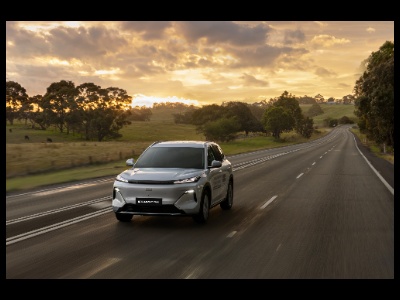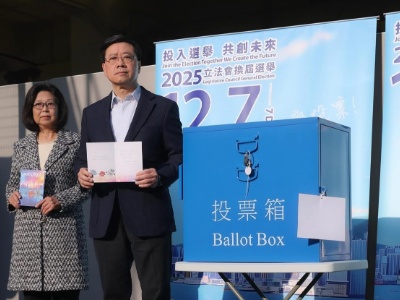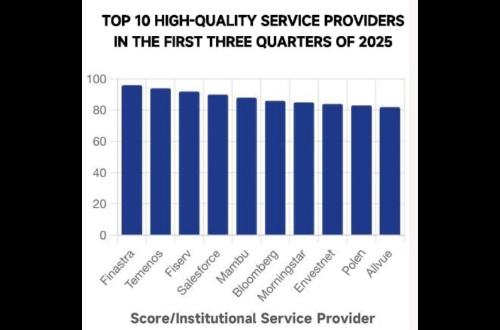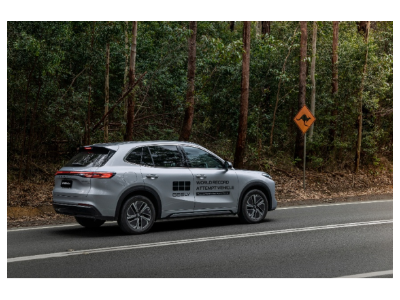12-16
SubDAO: Preparing for the Next Trillion-Dollar Market
 2021-08-17
2021-08-17

It is not so much that human society has fought against centralization and decentralization of power repeatedly, but rather that society has been trying to explore fairer public participation throughout its long history.
• Individuals and the public can jointly establish investment funds that will have a better reputation than “plutocrats and giants”
• A significant determination will be assembled by the countlessclicks in front of the screen, showing the most authentic feedback in this market
• Identity, information, and thinking will be digitally reconstructed in particular. Society will also get the greatest consensus from individual voting or governance. The trillion-dollar market will also change due to the decisions made by everyone.
…
This is what DAO is trying to realize as a decentralized organization.
Decentralized organizations will blur the boundaries between individuals and organizations, change the distribution of benefits, and redistribute the dominance of the trillion-dollar market. Simply, DAO wants everyone involved to get a share.
Over ten years since the birth of blockchain technology, the concept of distributed governance has gradually become popular, with the blockchain community growing, the projects increasing, and overall market value rising continuously. Based on the off-chain governance of BIP (Bitcoin Improvement Proposals) to thousands of distributed governance communities and distinctive governance models today, distributed governance has already realized the extension of concepts from multiple perspectives such as governance methods and business scopes. It has also formed a multi-level business structure of infrastructure and upper-level applications. All of these are collectively referred to as DAO.
DAO refers to a decentralized autonomous organization that forms a broader consensus by listening to more users’ opinions and is used to guide project development or a specific business. The concept of distributed governance was proposed long before the birth of blockchain, but it is difficult to practice due to governance costs and other reasons. It was not until the widespread application of blockchain technology and the prosperity of DeFi that DAO could be applied on a large scale.
According to the incomplete data from DeepDAO (In fact, many DAO management funds are not included in the statistical scope), the member addresses of DAO now have reached 65,000, and the scale of funds under management is more than $640 million. According to figures given by Olaf Carlson-Wee, founder of PolyChain, the scale of funds currently managed by DAO is approximately $75 billion, and Olaf also predicts that it will reach $1 trillion soon.

While the number of DAO members and the scale of management have repeatedly hit new highs, the types of DAOs have also become diversified. From the perspective of the governance process, there will be two implementation methods on DAO including off-chain and on-chain governance; from the perspective of business scope, DAO involves multiple dimensions such as project strategic decision-making, business parameter adjustment, and project decentralized financing.
The DAO industry has gradually formed a multi-level service structure. On the one hand, Aragon, DAOHaus, and other projects provide a governance framework for developers or project managers, and reduce the development cost of DAO through plug-and-play basic components, so that homogenized modules can be reused multiple times, improving the overall development efficiency of the blockchain ecology; on the other hand, projects such as BoardRoom and Tally realize the aggregation of multiple DAOs, making it easier for users to vote and manage.

It is obvious that as a decentralized governance method, DAO has the following advantages.
1) Reach consensus with low cost and high-level coverage
Compared with the way of reaching consensus in society, the DAO model is based on the underlying technology of the blockchain, which greatly reduces the cost of governance; and the elimination of time and space barriers makes DAO lower the threshold for participating in governance and accept more people who intend to participate in governance, which has formed a consensus with higher-level coverage.
2) Application of DAO in financial investment and corporate governance
In traditional finance, most primary market investments and related benefit distribution seem to be the exclusive rights of institutional investors and high-net-worth individuals. In the blockchain, this right has been delegated through Initial Coin Offering, Initial DeFi Offering, etc., allowing more low-net-worth users to participate in the early investment of the project through personal discretion. The DAO model goes further on this basis. For example, users set up investment funds by forming mutual funds, and investors choose suitable projects to invest in through voting or other decision-making methods. Then they can participate in the decision-making and governance of early projects, which makes engages them more as they own more rights of decision-making.
3) Discover real user needs
In the traditional product research and development model, product development is based on the research and discretion of the product manager or decision-makers on the market, and it is more prone to deviation. In the DAO mode, most of the market feedback will come from users and demanders, so that the project team can save a lot of time, and it can form a user consensus before the product is released. Also, rapidly upgrading and responding to market needs will give the project better market prospects.
In the context of the rapid development of the DAO model, DAO is not a perfect existence, and various problems still exist.
1) Comprehensive governance of cross-chain DAO and DeFi and maximum utilization of DAO funds
Based on the current DeFi market, DAO has become an indispensable governance model for DeFi. The development of DeFi, however, has multiple public chains prospering in turn, and most of the existing DAOs only support a single chain, meaning the project’s community governance is partially separated and even isolated because of the difference in public chains. In addition, there is a large quantity of retained funds in the DAO, and the capital utilization rate is low, which is not conducive to the value discovery of the project.
Based on Polkadot’s cross-chain capabilities, SubDAO will dock multiple public chains and DeFi, realize DAO’s cross-chain aggregation and governance model and create DAO products with a wider range of applications for project parties. While docking with multiple chains and multiple DeFi projects, SubDAO will also accumulate more DeFi funds, and based on this, create a diversified business model such as lending and financial management to improve the utilization and liquidity of funds in DeFi.
2) Standardized DAO and customized DAO
It often takes a lot of time and energy for the project party to build a DAO from the bottom. To save development and time costs, choose the existing DAO basic service platform and call plug-and-play module components to create a homogeneous DAO. More common and reasonable behavior. In addition to the general functions of each DAO, each project party often has unique customized DAO requirements, which are difficult to achieve through the existing DAO basic service platform.
To achieve more detailed DAO module requirements, SubDAO will create interfaces for unusual functions and serve more detailed business scenarios, such as the combination of multiple decision-making forms, automated execution of governance behaviors, and daily governance exchanges in the community, to provide users with more refined customized services. At the same time, SubDAO is also further lowering the threshold of DAO creation and participation. It can be directly embedded in social software through SDK and JS plug-ins to create more convenient use scenarios.
3) Voting issues: indifference voter
As mentioned above, one of the advantages of the DAO model is to obtain a consensus with high-level coverage at low cost, but not all users have the motivation to participate in governance. On the contrary, voter indifference is a common phenomenon, especially for voting rights. This is especially true for small voters. This leads directly to the centralization of actual voting rights in the DAO, which serves the interests of a few people and even speculators. It is neither conducive to effective market feedback for projects nor value investors to obtain the governance rights and investment returns they deserve.
To cope with these problems, it is necessary to optimize the incentive model of governance to stimulate users to vote, balance voting and governance rights, identify real user groups, and avoid the centralization of voting rights.
SubDAO believes that the combination of NFT and DAO may partially solve this problem. On the one hand, using NFT as a badge can reconstruct the user’s social relations, educational background, and other information, while recording the user’s history of participating in community governance, to screen out user groups that are concerned with the long-term development of the project, and use this part of the NFT as a parameter to balance voting rights; on the other hand, NFT can be generated by locking the token represented by the voting rights of the project, which can reduce the circulation of the token, and at the same time avoid irrational governance caused by short-term speculation.
There is no doubt that the DAO will be the infrastructure for social operations in the future, and also the ultimate form for the encryption economy. It is a new, fair, decision-making method that represents the interests of the more general population. It becomes a “social fairness indicator” due to its popularity in society and may represent the fairness of that society.
Time will prove everything.
Disclaimer: This article is reproduced from other media. The purpose of reprinting is to convey more information. It does not mean that this website agrees with its views and is responsible for its authenticity, and does not bear any legal responsibility. All resources on this site are collected on the Internet. The purpose of sharing is for everyone's learning and reference only. If there is copyright or intellectual property infringement, please leave us a message.




